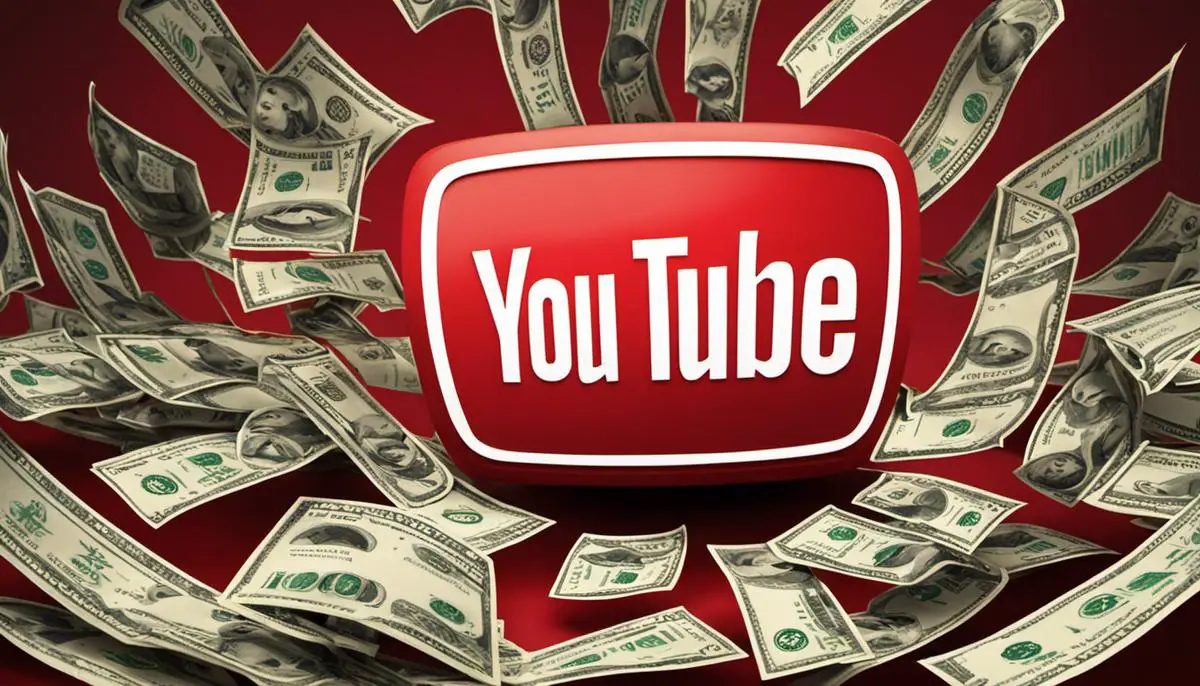Few online platforms compare to the reach and potential of YouTube, a virtual space that has given way to new forms of income generation. Among them, gaining prominence is the concept of passive income, a revenue stream that requires little to no effort to maintain once it’s up and running. For freelancers looking to diversify their income sources, generating passive income through YouTube is an increasingly viable option.
I’ve got the facts into why YouTube is a powerful medium for passive income, how to set up and optimize your YouTube channel, various monetization strategies that you can adopt, and tips on maintaining and growing your presence on the platform.
Understanding Passive Income and the Mandate of YouTube
Understanding Passive Income with YouTube
Passive income, by definition, is income that a person earns in a manner that requires less to no effort to maintain it. Traditionally, stock dividends, rental property income, and royalties from intellectual properties are examples of passive income. Recently, however, the rise of the digital economy has provided new avenues to earn passive income, including YouTube monetization.
Role of YouTube in Passive Income Generation
In the digital landscape, YouTube plays a significant role as a passive income catalyst. As the second most visited website globally, it has the capacity to reach billions and offers ample opportunities for freelancers to earn passive income. YouTube allows users to create, share videos and, more importantly, monetize their content through advertisements, membership subscriptions, merchandise shelf, Super Chat, and YouTube Premium revenue.
YouTube’s Ad Revenue System
YouTube’s primary monetization model is its Ad Revenue system. YouTubers make money through ads that are shown on their videos. This method requires users to join the YouTube Partner Program (YPP), and there are specific eligibility requirements to be met, including accumulating at least 4,000 valid public watch hours in the previous 12 months and having more than 1,000 subscribers.
Once you are a partner, ads can be shown on your videos, and you earn money depending on various factors such as the type of ad, the price of ads served, the number of clicks or views, and the territory where the ad is viewed. This revenue generated can be a source of passive income as your videos continue to accrue views over time, even if you’re not actively working on them.
Exploring Other YouTube Monetization Features
Apart from ad revenues, YouTube offers additional monetization features. The membership subscription allows your fans to pay a monthly recurring fee for special perks on your channel. For the merchandise shelf, you can showcase your official branded merchandise directly on your videos. Meanwhile, Super Chat is a feature where viewers can pay to have their comments highlighted during your live chats. Last is the YouTube Premium revenue where you get part of the fee paid by YouTube Premium subscribers who watch your content.
These features can all contribute towards maintaining a steady stream of passive income, provided you continue to engage your audience with regular, quality content.
Using YouTube as a Freelancer for Passive Income
YouTube offers a platform for freelancers to craft a varied, passive income stream. By generating and maintaining a YouTube channel filled with well-curated content, a freelancer can garner views and subscribers, which lead to continuous income. Furthermore, freelancers can educate the audience about their offerings, create brand legitimacy, and redirect viewers to their personal website or ecommerce platform.
If freelancers have specialized skills or expertise, they can multiply their earnings by developing instructional videos or sharing insightful tips related to their field. This might attract not only ad revenue but also product sponsorship deals, affiliate marketing partnerships, and other collaborations with YouTube creators, thus providing multiple avenues for income.
But, one must bear in mind that while YouTube offers a high income potential, it demands careful strategizing, consistent generation of appealing content, comprehension of the platform’s algorithms and constant engagement with the audience.

Setting up Your YouTube Channel
Creating Your Own YouTube Channel
Creating a YouTube channel as a freelancer can be accomplished with strategic planning and execution. Initially, you need a Google account. If you already have it, log in and then visit YouTube. At the top right corner of your screen, there’s a user icon. Upon clicking this, select ‘Your Channel’, which is where you will personalize your account by adding your brand name and other pertinent details.
Creating content
Becoming a successful YouTube content creator necessitates producing attractive, concise, and informative content regularly. Your videos should have an engaging title and thumbnail and offer value in terms of entertainment or information. Utilize the YouTube keyword tool to identify words and phrases that people are currently searching. Create content that reflects these popular search queries to maximize your video’s visibility.
Invest in decent quality audio and video equipment and learn basic video editing techniques to enhance production quality. Remember, the content and its delivery are what retain viewers and keep them coming back for more. These recurring viewers eventually play a crucial role in helping you earn passive income through YouTube.
Building your brand
Branding is essential for YouTube channels. Develop a distinct and recognizable visual style for your channel to communicate your brand’s character, which includes customizing your channel’s layout and creating a robust, visually captivating banner. Utilized striking colors, fonts, and logos consistently across your videos with a customized intro and outro can also contribute significantly to brand recognition.
In the channel’s ‘About’ section, specify what your channel offers. This section is where you share your story, mission, and values, instilling a sense of connection with your viewers. Keep it engaging and compelling, motivating viewers to subscribe.
Aligning the Channel with Audience Preferences
Understanding your target audience is pivotal in shaping your YouTube channel’s direction and the kind of content you produce. Analyze your demographic’s interests, how they consume content, what styles engage them most, and the kind of themes, formats, or perspectives they lean towards. Use YouTube analytics to gain insights into viewer behavior and preferences.
Respond to comments on your videos, create polls, ask for audience feedback, and even initiate discussions to know more about your viewers. This understanding will help shape future content in a manner most appealing to your target audience, inevitably growing your subscriber base and contributing to your pursuit of passive income on YouTube.
Generating Passive Income as a Freelancer
There are several ways freelancers can generate passive income through a YouTube channel. One is through ad revenue. Once you’ve hit 1,000 subscribers and 4,000 watch time hours, you can apply for the YouTube Partner Program. This allows you to monetize your videos through ads. Another method is sponsorships where brands pay to have their products or services featured or reviewed on your channel.
Alternatively, you could use your channel to promote and sell your own products or services. For instance, a freelance graphic designer could create videos with designing tips while promoting their paid design courses or freelance services.
Affiliate marketing is another avenue for passive income. You can link to products in your video description and earn commission from any purchases made using that link. Finally, YouTube also has a channel memberships feature where subscribers can pay a monthly fee for exclusive content or perks.
Remember, the journey to a successful YouTube channel requires patience and diligence.
Being consistent in producing, uploading and sharing valuable, high-quality materials, engaging with your audience frequently and truly understanding their needs, as well as leveraging the right methods of monetization are incremental steps in a process that can provide an exceptional source of passive income.

Optimizing Your YouTube Content
Appreciating the Significance of SEO for YouTube Content
Acquiring a comprehensive understanding of Search Engine Optimization (SEO) is utmost for success in freelancing with YouTube. When you optimize your video content for SEO, it enhances the likelihood that it will appear in search results when users enter keywords related to your content. This optimization significantly bolsters the visibility and interaction your material receives, resulting in increased views, shares, and ad revenue – thus setting the stage for profitable passive income generation.
How to Use Keywords Effectively
Keywords play a vital role in making your YouTube content discoverable. Understanding what your potential viewers are searching for can help you decide which keywords to use in your video titles, descriptions, and tags. Using tools like Google Trends and YouTube’s search suggest feature can help you identify popular keywords relevant to your content. Once you’ve identified these keywords, use them naturally throughout your content to increase its visibility in search results.
Creating Compelling Thumbnails
Thumbnails are another critical aspect of optimizing your YouTube content. A compelling thumbnail can significantly increase your video’s click-through rate, making it vital to your video’s success. To create an effective thumbnail, ensure it accurately represents your video’s content, is clear and high-quality, and includes engaging elements like close-up faces, bright colors, and clear text.
Writing Effective Descriptions and Titles
Your video’s title and description are essential for SEO as they help YouTube’s algorithm understand your video’s content. When writing your title, be sure it includes your primary keyword and clearly communicates what your video is about. Your description should also include your primary and secondary keywords, vital information about your video, and any necessary links like your social media profiles or website.
Increasing Your Video’s Visibility and Engagement
Numerous factors can affect your video’s visibility and engagement, including the time you publish it, viewer engagement, video length, and more. Publishing your videos at peak times can increase their visibility, while encouraging viewer engagement (like asking viewers to like, share, and comment) can boost their rankings in YouTube’s algorithm.
In addition, creating longer videos that keep viewers watching can help improve your video’s visibility. Finally, sharing your videos on other platforms and embedding them on your website can also increase their visibility and reach.
Utilizing Data Analytics
YouTube provides comprehensive analytics through its Studio tool. This tool allows you to collect valuable data about your viewers, their behaviors, and the overall performance of your videos. Regularly reviewing this data can provide insights into which of your videos perform the best, which are least successful, and how to enhance your overall video strategy.
Freelancers can leverage the power of YouTube to build an engaged audience base, thus opening doors to several monetization strategies. Successfully optimized YouTube content can act as a continual source of passive income, a goal many freelancers strive to achieve.

Monetizing Your YouTube Channel
Beyond Ads: Diverse Monetization Strategies for Your YouTube Channel
Earning from a YouTube channel is not purely about accumulating views and profiting from ad revenue. Especially for freelancers looking to harness a reliable passive income, there lie multiple strategies beyond the conventional ad-dependent model. These can be utilized either in conjunction or as alternatives to ad-sourced income.
Sponsored Videos
One popular method of monetization is through sponsored videos. With this strategy, brands pay you to create content that features their products or services. Your earnings largely depend on the size of your audience and your niche. While sponsored videos can be profitable, they do require you to openly disclose your relationship with the sponsor to maintain transparency with your viewers.
Affiliate Marketing
Affiliate marketing on YouTube involves promoting products in your videos and providing affiliate links to those products. Each time a viewer uses your link to make a purchase, you earn a commission. This method of monetization is highly variable, depending on the products you promote and the purchasing habits of your audience. However, affiliate marketing has the potential to be a lucrative source of income if you have the right audience.
Product Reviews
Product reviews are another form of monetization which can often be combined with affiliate marketing. In this case, you review a product in your video and provide a link for your viewers to purchase it. You earn money from the affiliate link, but may also earn money from the product’s company for the review itself. This form of monetization requires a sound understanding of your audience’s interests and needs; the more aligned the product is with your viewers’ preferences, the more likely you are to earn income.
Selling Merchandise
Selling merchandise is an excellent way to monetize a YouTube channel. From branded clothing to ebooks, digital courses, and more, the products you sell can vary widely depending on what suits your brand and audience. This method requires an upfront investment to create the merchandise and a platform to sell it. Furthermore, the willingness of your audience to purchase your merchandise will be a vital factor in the profitability of this method.
Wrapping Up
The tactics we’ve discussed – endorsing sponsored videos, harnessing affiliate marketing, engaging in product reviews, and boosting merchandise sales – require unique strategies and each has their own set of advantages and drawbacks. Nevertheless, when utilized to their full potential, these methods can generate significant passive income for freelancers leveraging YouTube. Keep in mind, successful monetization of a YouTube channel requires a mix of patience, continuous effort, creativity, and deep insight into your audience’s interests and needs.

Maintaining and Growing Your YouTube Presence
Keeping Your YouTube Presence Alive
It’s essential to maintain an active and interesting YouTube presence to secure steadily increasing passive income. Routine updates play a vital role in keeping viewers entertained and engaged. The absence of fresh material can lead to a decline in viewership, thereby impacting your earnings. For freelancers, having a content calendar can be beneficial, as it ensures regularity and gives subscribers a timeline for when to expect new videos. Posting content frequently can also boost YouTube’s algorithm favoring your channel, thus improving the visibility of your content.
Engaging with the Audience
Engagement with viewers is extremely crucial for channel growth. Responding to comments, including viewer suggestions in videos, or holding live Q&A sessions can make the audience feel valued. This strategy can spur viewers to interact more with the channel, and thus increase views and income. A loyal audience base is one of the main factors in sustainable passive income.
Collaboration With Other YouTubers
Collaborating with other YouTubers can be an effective way to expose a freelancer’s channel to different audiences. By working with creators producing similar content, freelancers can bring new viewers to their channel. If these visitors find the content interesting, they may subscribe and become regular viewers, contributing to long-term passive income.
Leveraging on Trends
Staying updated with popular trends and incorporating them into your content can help increase viewership. Content in line with ongoing trends often gains higher viewership due to its relevance. However, it’s important to ensure any trending content is still relevant to the freelancer’s YouTube channel theme. Straying too far from the brand identity for the sake of trends can confuse or alienate subscribers.
Reviewing Performance Analytics
Understanding and regularly reviewing YouTube Analytics is another key factor in maintaining and growing a YouTube presence. Analytics can provide insight into which content is performing well, the demographics of viewers, audience retention rates, and other key metrics. Freelancers can make informed decisions about future content based on these statistics, consistently adjusting and improving their content strategy for sustained growth and income.
Google’s built-in YouTube Analytics feature provides comprehensive data on several dimensions. But there are also third-party tools available that provide unique insights and may assist in enhancing a YouTube channel’s performance. By optimizing your content strategy based on performance data, you can ensure continuing viewer engagement and steady passive income over time.
Adapting and Evolving
While it’s important to maintain a certain degree of consistency in your YouTube channel’s theme or branding, adaptation is also vital to attracting new viewers and keeping existing ones interested. Continuously refining your content based on audience feedback and performance metrics can keep your content fresh and engaging, thereby contributing to the sustainability of your passive income. So, don’t hesitate to experiment, innovate, and adapt as you continue your YouTube journey.
By combining these strategies, freelancers can generate a significant and sustainable passive income stream through their YouTube channel. The effort put into regular content creation, audience engagement, collaborations, staying on top of trends, and constant performance review will pay off with long-term revenue growth.

Creating and nurturing a successful YouTube channel as a freelancer is not just about creating content, but also knowing how to market it and leverage various income streams. Passive income through YouTube doesn’t happen overnight. It requires dedication, strategic planning and a willingness to adapt to the platform’s ever-changing dynamics. However, with the right approach, YouTube can become an indispensable tool for generating passive income. The guide herein offers insights and tips that can help freelancers navigate their way through setting up a YouTube Channel, optimizing content, monetizing the platform, and maintaining a solid and ever-growing YouTube presence.



